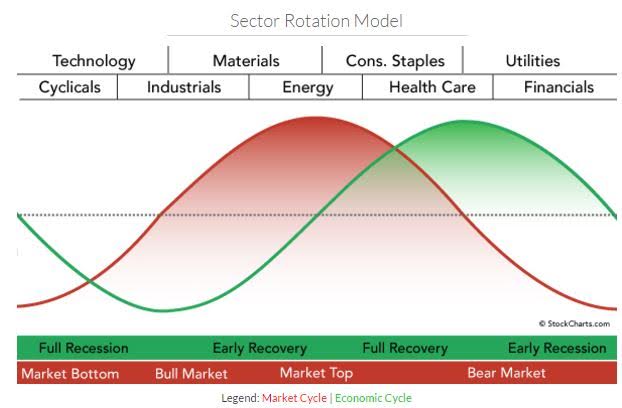How, and Why, Investors are Preparing for a Santa rally in US Stock and Rising Inflation
One of the more consistent "calendar effects" in markets is the so-called "Santa Rally" in global stock markets in the final weeks of December. Historically, equity markets have repeatedly shown a tendency to rally in the final five trading days of the year, and combined with the January effect, which also tends to be positive for equities at the start of a new year, investors are typically cheerful around the holiday season.
While we're still a few days from the traditional "Santa Rally" period, the types of stocks that have been leading markets higher suggest that equities should rally further through the holidays and into 2017. Sector rotation is the subset of technical analysis that involves evaluating what types of stocks are performing well to help predict how the stock market as a whole will perform moving forward. Historically, economically-sensitive sectors like consumer cyclical, industrial and energy stocks tend to outperform the stock market in a healthy uptrend, while economically-insensitive sectors like utilities and health care stocks typically outperform when the market is at risk of a pullback.
John Murphy, the godfather of intermarket analysis, developed the idealized sector rotation model shown below:

Source: Stockcharts.com
Sector rotation “works” because most fund managers must maintain a full allocation to stocks, regardless of their outlook for future performance. Therefore, the best way for them to outperform their benchmarks is to increase exposure to economically-sensitive sectors in bull markets and move cash into more conservative, stodgy stocks during bear markets. Based on the price action we've seen post-election, investors are positioning for continued strength in markets and the global economy:

Source: Stockcharts.com
Since November 8th, the strongest-performing sectors generally correspond to the "bull market" stage of Murphy's idealized model. Conversely, the three worst-performing sectors are the types of conservative stocks that tend to outperform in bear markets, suggesting that the bull market remains healthy under the surface. While the "reason" for this move doesn't matter as much as the price action, it's logical to assume that investors are giving a thumbs up to the fiscal stimulus plans of President-Elect Trump and the incoming Republican-controlled Congress.
As a broader takeaway, we'd note that the strongest performing sectors are starting to tilt toward the late-stage bull market area (industrials, materials, and energy). This is typically when inflation starts to pick up in the real economy, so we'll be keeping a close eye on consumer prices heading into 2017; if the price of goods and services start to rise sharply, the Federal Reserve will have to raise interest rates far more aggressively than the "one hike per year" pace that its established over the last 24 months.
This research is for informational purposes and should not be construed as personal advice. Trading any financial market involves risk. Trading on leverage involves risk of losses greater than deposits.
Recommended Content
Editors’ Picks
EUR/USD edges lower toward 1.0700 post-US PCE

EUR/USD stays under modest bearish pressure but manages to hold above 1.0700 in the American session on Friday. The US Dollar (USD) gathers strength against its rivals after the stronger-than-forecast PCE inflation data, not allowing the pair to gain traction.
GBP/USD retreats to 1.2500 on renewed USD strength

GBP/USD lost its traction and turned negative on the day near 1.2500. Following the stronger-than-expected PCE inflation readings from the US, the USD stays resilient and makes it difficult for the pair to gather recovery momentum.
Gold struggles to hold above $2,350 following US inflation

Gold turned south and declined toward $2,340, erasing a large portion of its daily gains, as the USD benefited from PCE inflation data. The benchmark 10-year US yield, however, stays in negative territory and helps XAU/USD limit its losses.
Bitcoin Weekly Forecast: BTC’s next breakout could propel it to $80,000 Premium

Bitcoin’s recent price consolidation could be nearing its end as technical indicators and on-chain metrics suggest a potential upward breakout. However, this move would not be straightforward and could punish impatient investors.
Week ahead – Hawkish risk as Fed and NFP on tap, Eurozone data eyed too

Fed meets on Wednesday as US inflation stays elevated. Will Friday’s jobs report bring relief or more angst for the markets? Eurozone flash GDP and CPI numbers in focus for the Euro.